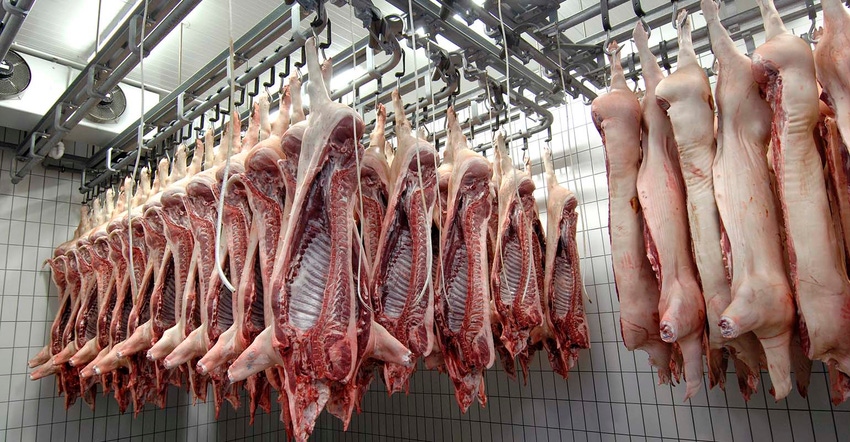New inspection system codifies into law advancements U.S. pork industry piloted over last 20 years.

The long-anticipated modernization of the swine slaughter inspection was launched Tuesday by the U.S. Department of Agriculture. For the first time in more than five decades, USDA’s Food Safety & Inspection Service (FSIS) is modernizing inspection at market hog slaughter establishments with a goal of protecting public health while allowing for food safety innovations, the agency said.
“This regulatory change allows us to ensure food safety while eliminating outdated rules and allowing for companies to innovate,” Agriculture Secretary Sonny Perdue said. “The final rule is the culmination of a science-based and data-driven rule-making process, which builds on the food safety improvements made in 1997, when USDA introduced a system of preventive controls for industry. With this rule, FSIS will finally begin full implementation of that program in swine establishments.”
The final rule has new requirements for microbial testing that apply to all swine slaughterhouses to demonstrate that they are controlling for pathogens throughout the slaughter system. Additionally, FSIS is amending its meat inspection regulations to establish a new inspection system for market hog establishments called the New Swine Slaughter Inspection System (NSIS).
In the final rule, FSIS amended the regulations to require all swine slaughter establishments to develop written sanitary dressing plans and implement microbial sampling to monitor process control for enteric pathogens that can cause foodborne illness. The final rule also allows market hog establishments to choose if they will operate under NSIS or continue to operate under traditional inspection.
FSIS will continue to conduct 100% inspection of animals before slaughter and 100% carcass-by-carcass inspection, as mandated by Congress. FSIS inspectors will also retain the authority to stop or slow the line as necessary to ensure that food safety and inspection are achieved. Under NSIS, offline FSIS inspectors will conduct more food safety and humane handling verification tasks to protect the food supply and animal welfare.
The National Pork Producers Council (NPPC) applauded USDA for introducing the new inspection system. NPPC president David Herring, a producer from Lillington, N.C., said the system incentivizes investment in new technologies while ensuring a safe supply of American pork.
"The U.S. pork production system is the envy of the world, because we continuously adopt new practices and technologies while enhancing safety, quality and consistency. This new inspection system codifies the advancements we have made into law, reflecting a 21st-century industry," Herring said.
NSIS, which has been piloted at five pork processing plants, was developed over many years of research and evaluation and recently received the endorsement of the National Association of Federal Veterinarians, highlighting the strong science-based approach used in designing the program.
"The U.S. industry has long been a global leader in offering the highest-quality, safest and most affordable pork to consumers here at home and abroad. We are proud of our record and welcome this program to further modernize our production process," Herring added.
The North American Meat Institute (NAMI) also welcomed the rule, which allows for further food safety innovation while continuing to ensure access to safe pork.
“Although we have not reviewed the final rule in detail, FSIS has created this system by relying on science and years of experience that will continue to ensure the consumer is getting safe and wholesome pork,” NAMI president and chief executive officer Julie Anna Potts said. “The New Swine Inspection System will allow plants who choose to participate an opportunity for food safety innovation -- a benefit to consumers and our industry at large. Under both the new and existing systems, our members’ highest priorities are to provide safe products to the public and to ensure the workforce on which they depend is also safe.”
To view the final rule, visit the FSIS website at go.usa.gov/xVPVK.
About the Author(s)
You May Also Like



.png?width=300&auto=webp&quality=80&disable=upscale)

